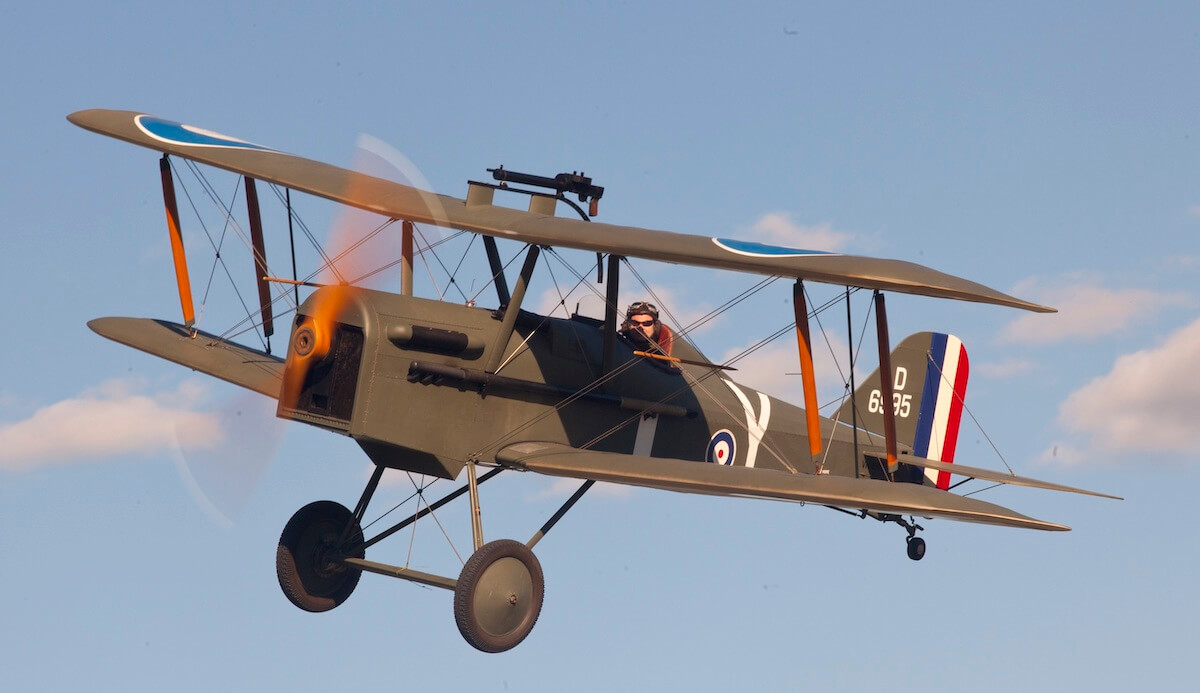TAVAS Collection
R.A.F. SE5a
Remembered as ‘the Spitfire of The Great War’, the Royal Aircraft Factory SE5a was an immensely strong and successful fighter that first flew in November 1916.
It was also relatively easy to fly, unlike many of its short-coupled, rotary engined contemporaries. This and the fact it was a very stable gun platform made it very effective even in the hands of a novice.
Designed around the Hispano-Suiza V-8 engine, the type was built in almost the same numbers as the more famous Sopwith Camel (5,205 SE5as to 5,490 Camels) but was arguably a more modern design. While Camels were all but obsolete by war’s end, SE5as continued to serve with many air arms, including the RAAF, for most of the 1920s.
No.2 Sqn AFC flew the SE5a over France, while No.5 (Training) Sqn used the type in England.
Despite the large number produced (and the fact several of Australia’s ‘Imperial Gift’ SE5as were never even uncrated!) there are very few original survivors: Three in the UK, one in South Africa, and one in Australia – ‘A2-4’ at the Australian War Memorial.
No.1 and No. 3 Squadron RAAF both used the SE5a back in Australia, after the war, along with No. 1 Flying Training School at Point Cook.
Our SE5a replica was originally built and flown in the USA before being sold to the Netherlands. When Dutch authorities banned homebuilt aircraft from display flying, TAVAS was able to acquire it. The aircraft arrived at Caboolture in September 2015 and was re-assembled by our team.
After contemplating many iconic Australian markings, we finally settled on the rather nondescript colours of D6995 of No.2 Squadron. This was the personal aircraft of a true Australian legend – Tasmanian Lt. Frank Alberry, who downed two Fokker Dr.1s and five Fokker D.VIIs in just two months, despite having only one leg!
This remarkable ace – who should be a household name – survived Gallipoli and earned a DCM at Pozierres before being wounded and losing his leg. When he got out of hospital he personally petitioned the King for permission to join the AFC, and was eventually assigned to No.2 Sqn and the SE5a in June 1918.
It is an honour for us to represent Frank Alberry’s aircraft and keep his story alive.
General Characteristics
Length: 6.38 m (20 ft 11 in)
Wingspan: 8.10 m (26 ft 7 in)
Height: 2.90 m (9 ft 6 in)
Wing Area: 22.70 m2 (244 ft2)
Empty Weight: 640 kg (1,410 lb)
Gross Weight: 878 kg (1,935 lb)
Powerplant: 1 x 200 hp (150 kW) Hispano-Suiza 8B or Woleley Viper water cooled V8 engine
Performance
Maximum speed: 222 km/h (138 mph, 120 knots)
Range: 480 km (300 miles)
Service Ceiling: 5,200 m (17,000 ft)
Armament
1 x .303 in (7.7 mm) Vickers machine gun on the fuselage
1 x .303 in (7.7 mm) Lewis machine gun on the upper wing
4 x 11 kg (25 lb) Cooper bombs
© Copyright The Australian Vintage Aviation Society

